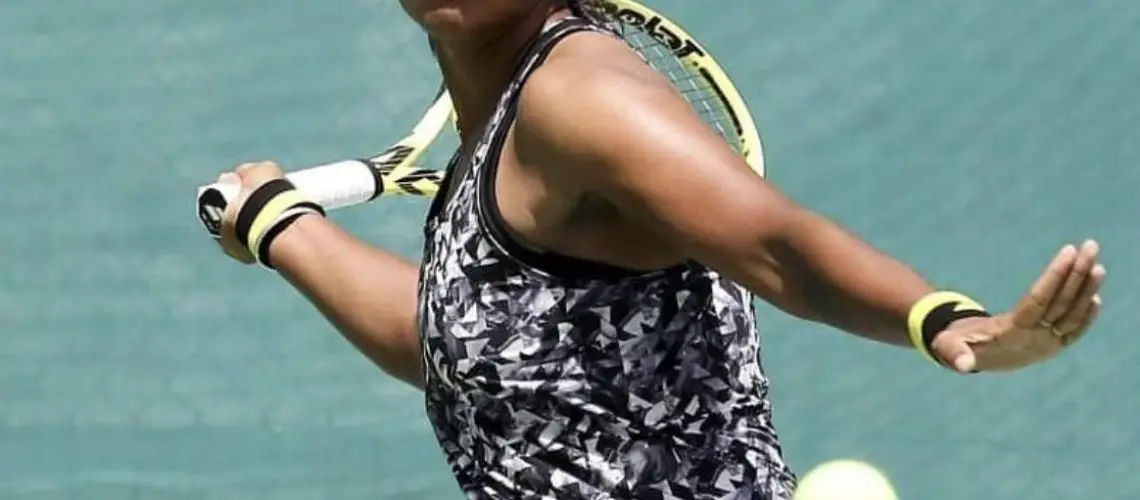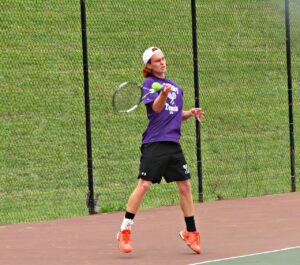We may earn money or products from the companies mentioned in this post.
Introduction to Footwork in Tennis

Tennis is a game of finesse, strategy, and skill One crucial aspect that often goes unnoticed but plays a significant role in a player’s success is footwork From quick sprints across the court to subtle adjustments in body position, footwork is the foundation upon which every shot is built
Definition of Footwork
Footwork in tennis refers to the movement and positioning of a player’s feet during gameplay It involves a combination of agility, speed, balance, coordination, and anticipation to efficiently reach and strike the ball Good footwork allows players to maintain an optimal position on the court and execute shots with precision and power
Importance of Footwork in Tennis
1 Enhancing Performance on the Court:
Footwork is essential for maximizing performance on the tennis court It enables players to quickly react to their opponent’s shots, reach difficult balls, and create better angles for offensive shots By efficiently moving around the court, players can control their positioning and dictate play with greater effectiveness
Additionally, proper footwork helps players generate power in their shots by allowing them to transfer weight from one leg to another smoothly This weight transfer contributes significantly to shot accuracy and provides players with better stability while executing different strokes
2 Injury Prevention and Physical Conditioning:
In addition to its impact on performance, footwork also plays a crucial role in preventing injuries and maintaining physical conditioning The constant movement required during matches places stress on various parts of the body such as the ankles, knees, hips, and lower back
A player with good footwork techniques can minimize strain on these areas by using efficient movement patterns that distribute impact forces evenly throughout the body Strong footwork also helps players maintain a balanced stance, reducing the risk of twisting or spraining an ankle while changing direction rapidly
Moreover, footwork exercises and drills are an integral part of tennis training programs These activities improve agility, speed, balance, and coordination, enhancing overall physical fitness and endurance on the court
In conclusion, footwork is a fundamental aspect of tennis that significantly impacts a player’s performance and overall well-being By mastering proper footwork techniques and incorporating them into their training routines, players can elevate their game to new heights while staying injury-free
Types of Footwork Techniques in Tennis

Split Step
Have you ever wondered how tennis players seem to be able to move effortlessly across the court, ready to pounce on any incoming shot? It all starts with the split step The split step is a fundamental footwork technique in tennis where the player jumps and lands with their feet apart, just before their opponent makes contact with the ball
So when should you use a split step? The split step is particularly useful when you’re anticipating your opponent’s shot By performing a split step, you can quickly react and change direction based on where the ball is going It helps you stay balanced and ready to explode into action
Incorporating split steps into your game has numerous benefits Not only does it improve your reaction time and agility, but it also allows you to position yourself optimally for each shot By mastering this footwork technique, you’ll have an edge over your opponents
Side Shuffle
The side shuffle is another essential footwork technique in tennis that enables players to move laterally across the court swiftly It involves taking small, quick steps while keeping your hips low and facing sideways
To perform a side shuffle effectively, focus on maintaining a wide base by keeping your feet shoulder-width apart This provides stability and allows for rapid changes in direction as needed during rallies or defensive situations
The side shuffle plays a crucial role in maintaining balance and speed on the court By incorporating this footwork technique into your game, you’ll be able to cover more ground efficiently and reach those hard-to-reach shots with ease
Crossover Step
The crossover step is an essential footwork technique used in tennis when moving diagonally across the court It involves stepping one foot over the other, crossing in front or behind, depending on the direction of movement
Knowing when and how to use a crossover step during play is crucial This technique is particularly useful when you need to quickly change direction while maintaining balance and stability For example, when retrieving shots hit wide to your forehand side, executing a crossover step allows you to cover more ground efficiently
Pivot Step
Pivot steps are quick movements where players shift their weight onto one foot while using the other foot as a pivot point These steps are commonly used for changing direction rapidly without losing balance or wasting time
The significance of pivot steps becomes evident when players need to react swiftly to their opponent’s shots or when they find themselves out of position on the court By mastering this footwork technique, players can make seamless transitions from offense to defense and vice versa
Advanced Footwork Techniques for Improved Performance

When it comes to improving your performance on the court, mastering advanced footwork techniques is crucial These techniques can give you a competitive edge by allowing you to move quickly and efficiently around the court, enabling you to reach shots that seemed impossible before
Close-step technique
The close-step technique is an essential skill for approaching shots near the net It involves taking small, quick steps to maintain balance and control while moving towards the net This technique allows you to respond swiftly to drop shots or short angles, putting you in a better position to make successful volleys or smashes
Open stance forehand
The open stance forehand is a powerful shot that offers several advantages It allows for greater rotational power and generates more racket head speed, resulting in increased ball pace and depth Additionally, using an open stance forehand enables players to recover quickly after hitting the shot, as it facilitates a smoother transition back into a ready position
To execute an open stance forehand properly:
- Start with your feet shoulder-width apart and parallel to the baseline
- As your opponent hits the ball towards you, rotate your hips and shoulders towards the side where you want to hit your forehand
- Pivot on your back foot while shifting your weight onto your front foot
- Swing through with a smooth motion, making contact with the ball at waist height or slightly in front of you
- Follow through by extending your arm towards the target and recovering back into a balanced position
Making these adjustments to your footwork can significantly enhance your overall performance on the court Practice these techniques regularly to develop muscle memory and improve your agility and speed Remember, consistency is key, so keep refining your footwork skills to achieve optimal performance
Practicing and Developing Your Tennis Footwork Skills

Tennis is a sport that requires agility, speed, and precise footwork Whether you are a beginner or an advanced player, honing your footwork skills is crucial to improving your overall game In this article, we will explore various footwork drills tailored to different skill levels and discuss how to incorporate them into your training regimen for maximum effectiveness
Footwork Drills for Different Skill Levels
Let’s begin by looking at some footwork drills designed specifically for different skill levels It’s important to start with drills that align with your current capabilities and gradually progress as you improve
Beginner-Level Drills
If you’re new to tennis, focus on mastering the basics of movement on the court Start with simple agility exercises such as ladder drills or cone drills These drills will help you develop quick feet and improve your ability to change direction swiftly
Intermediate-Level Drills
For intermediate players looking to take their footwork skills up a notch, incorporating side-to-side movements is essential One effective drill is the “shuffle step” drill where you move laterally from one side of the court to the other using quick side steps This exercise enhances your lateral speed and helps in reaching wide shots more efficiently
Advanced-Level Drills
If you consider yourself an advanced player aiming for peak performance, it’s time to challenge yourself with more complex footwork drills Incorporate multidirectional movements such as diagonal sprints or figure-eight patterns on the court These dynamic exercises simulate real match scenarios and enhance your ability to react quickly while maintaining balance
Incorporating Footwork Exercises into Your Training Regimen
Once you have identified the appropriate footwork drills for your skill level, it’s crucial to integrate them into your regular training routine Consistency is key in developing and refining your footwork skills
How Often Should You Practice Footwork?
The frequency of footwork practice depends on your dedication and availability Aim to allocate at least two to three dedicated sessions per week solely for footwork drills These sessions can be combined with your regular tennis practice or scheduled separately based on your preferences Remember that quality practice trumps quantity, so make each session count by focusing on proper technique and intensity
Utilizing Video Analysis for Improved Footwork Performance
In today’s digital age, video analysis has become an invaluable tool for athletes seeking to fine-tune their skills When it comes to improving footwork in tennis, recording and analyzing your movements can provide valuable insights
By filming yourself during practice or matches, you can identify areas of improvement in real-time Pay attention to your positioning, balance, and timing during different shots Analyzing these recordings allows you to pinpoint specific weaknesses in your footwork technique and work on correcting them systematically
Furthermore, seeking feedback from a qualified coach or using specialized software that offers frame-by-frame analysis can greatly enhance the effectiveness of video analysis as a training tool
In conclusion,

Developing strong footwork skills is essential for any tennis player looking to improve their game By incorporating appropriate drills into your training regimen and utilizing video analysis techniques, you can enhance your agility, speed, and overall performance on the court So lace up those shoes and start practicing!
Useful Links

16 Tennis Footwork Drills [2023 In-Depth Guide]
Tennis Movement and Footwork: The Common Language …
28 Valuable Footwork Drills for Tennis Players
Struggling To Improve Your Tennis Footwork? These Tips …
Footwork Technique at the Net
Best Tennis Drills to Improve Footwork
6 Videos about Tennis Footwork Drills
Technique: Footwork Drills for Tennis Players on the Road
5 Tennis Drills for Beginners to Improve Footwork
Tennis Footwork Training
Move Like Federer: A Guide on How to Improve Your …
Biomechanical Analysis of Different Footwork Foot …
Why Footwork Drills Are More Important Thank You Think
Tennis Footwork Drills for Speed and Agility
Footwork. Meaning in tennis. Definition. Wiki. Terms
Learn 4 Important Tennis Footwork Techniques
Bailey Tennis Footwork: Revolutionary Tennis Footwork
DEVELOPING FOOTWORK SITUATIONALLY






